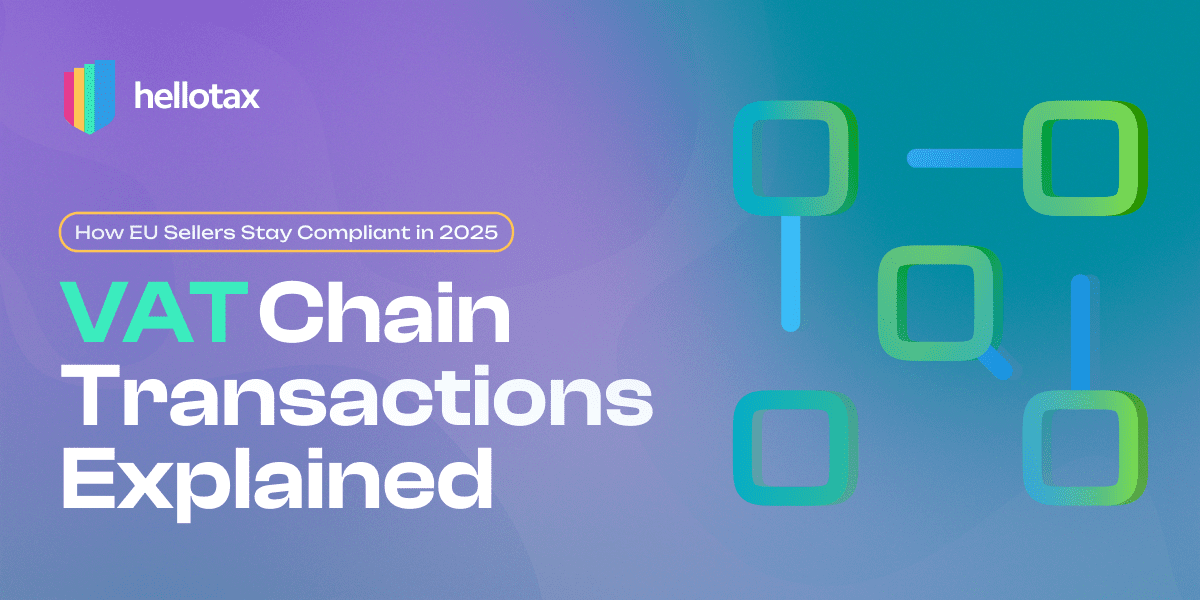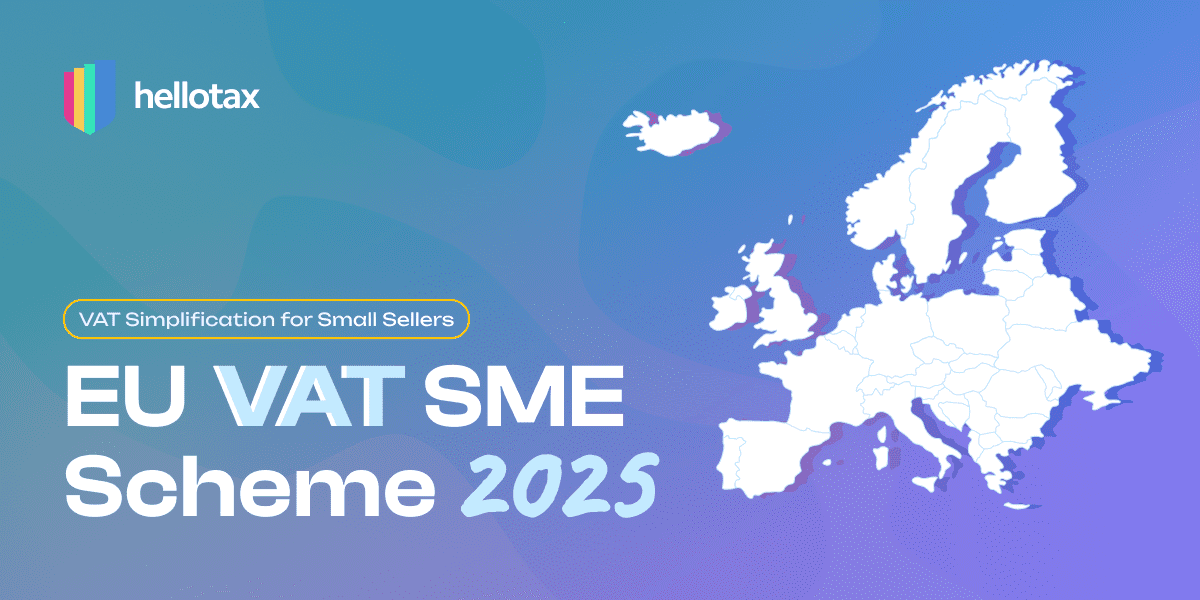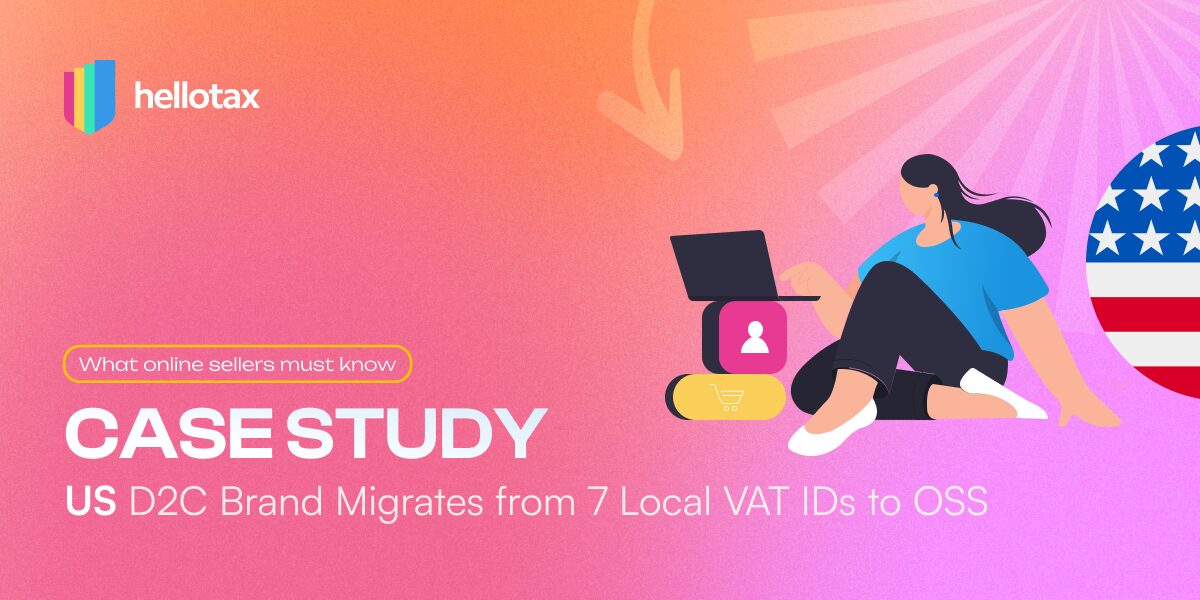VAT chain transactions get tricky fast when you sell B2C and the supplier ships directly to your customer. This guide focuses on the real-world dropshipping cases that most online sellers face and explains, in simple terms, who must register for VAT, when OSS is possible, and how to avoid double taxation.
Brenda Varela
Last Updated on 21 October 20251. What are VAT chain transactions (in practice)?
VAT chain transactions happen when there are two sales of the same goods, but the goods move only once—typically straight from your supplier to your consumer. In B2C dropshipping, the key question is: who arranges the transport? That single fact decides whether you can use OSS or need a local VAT registration in the customer’s country.
Plain-English rule of thumb:
If your supplier arranges shipping to your B2C customer, you usually can’t use OSS and will often need local VAT where the customer is.
If you arrange shipping (less typical in classic dropshipping), your B2C sale may be an intra-EU distance sale that can go via OSS.
In B2C contexts, getting VAT chain transactions right prevents double VAT, audit headaches, and re-filings.
2. The three B2C scenarios you’ll actually encounter (VAT chain transactions)
Scenario A — Supplier ships cross-border to your B2C customer
Flow: Supplier (DE) → ships to Customer (ES); you invoice the customer.
Outcome: Your sale is a non-moving domestic supply at destination → charge Spanish VAT → register/file in Spain.
OSS? No. You didn’t control the transport, so this B2C sale doesn’t qualify for OSS.
For a deeper dive into why dropshipping rarely works with OSS and how to stay compliant, read:
Dropshipping and the OSS Scheme Explained
Scenario B — You control the cross-border transport (non-typical dropshipping)
Flow: You book/pay the carrier from supplier (DE) to Customer (FR).
Outcome: Your sale can qualify as an intra-EU distance sale → charge French VAT.
OSS? Yes. You can report under the Union OSS in your home country—but only if you actually organise and pay for the transport.
To understand where OSS fits into your wider setup, see:
One-Stop-Shop (OSS) Explained
Scenario C — Supplier and customer are in the same country; you’re abroad
Flow: Supplier (DE) → ships to Customer (DE); you’re established elsewhere.
Outcome: Your sale is domestic German B2C → charge German VAT → VAT registration/filing in Germany.
OSS? No. OSS doesn’t cover domestic sales, only cross-border B2C distance sales.
If you’re planning Pan-EU FBA or local warehousing and need to split OSS vs local VAT correctly, see:
Pan-EU VAT Compliance for Dropshippers
3. Quick decision checklist for B2C chain transactions
-
Who arranges transport?
Supplier → likely no OSS. You → OSS may apply. -
Where do the goods end up?
For non-moving B2C supplies, VAT is due where the customer is. -
Do you store stock in a country?
Local storage = local VAT registration and local returns (OSS does not cover domestic sales). -
Do you hold evidence?
Transport proof (e.g., CMR), correct VAT numbers, country-correct invoices. -
Are reports clean?
Never report the same sale in both OSS and a local return.
These steps keep VAT chain transactions tidy and defensible in audits.
4. EU Legal Background: Quick Fixes and Chain Rules
Since 2020, the EU “Quick Fixes” have standardised how VAT chain transactions work.
Only one supply is linked to the physical transport (the “moving supply”), and all others are domestic supplies (“immovable” supplies).
Who organises the transport determines which sale is cross-border and which must be treated as domestic.
This principle is based on Article 36a and Article 141 of the EU VAT Directive and applies uniformly across all Member States.
5. Common mistakes and risks for online sellers
Many online sellers don’t realise they’re part of a VAT chain transaction and unintentionally misreport their sales.
Here are the most frequent errors we see:
-
Using OSS when the supplier ships the goods.
-
Failing to register for VAT locally where the goods are delivered.
-
Reporting domestic sales through OSS, which isn’t allowed.
-
Missing proof of transport, making the classification unclear.
These errors can lead to double VAT, blocked refunds, or penalties.
Working with a VAT specialist ensures each sale is reported in the right country and under the correct scheme.
6. What hellotax does for sellers
At hellotax, we help online sellers handle VAT chain transactions with ease by providing:
-
Automated VAT registrations and filings in all EU countries
-
Mapping of supply flows to classify sales correctly
-
OSS and local VAT setup to simplify compliance
-
A central dashboard to manage all countries and filings
-
Dedicated local tax experts who handle communication with authorities
Whether you run one Shopify store or multiple Amazon FBA accounts, hellotax makes VAT compliance simple and transparent — from registration to return.
7. Useful Resources
-
Official EU guide on VAT chain transactions:
European Commission — VAT Quick Fixes and Chain Transactions -
Related hellotax articles:
Want to see how other online sellers manage VAT chain transactions and cross-border compliance across Europe?
Discover real examples of how e-commerce businesses solved complex VAT challenges with hellotax’s support:
👉 Explore more VAT Case Studies from hellotax
8. Key Takeaway
Chain transactions are common for EU online sellers but often misunderstood.
Knowing which sale qualifies as the cross-border transaction and when to register locally is essential to avoid double taxation.
With automated tools and expert VAT support from hellotax, sellers can stay compliant while scaling their business across Europe.
These principles follow the harmonised EU rules introduced by the 2020 VAT Quick Fixes (Articles 36a and 141 of the EU VAT Directive), which continue to apply across all Member States in 2025.
📣 Ready to simplify multi-country VAT compliance?
Let hellotax handle your VAT registrations, filings, and chain-transaction reporting — all in one automated platform.
👉 Book your free consultation today!







The breakdown of how VAT chain transactions work is so helpful, especially with cross-border sales in the EU. It’s interesting to see how one sale can be linked to multiple businesses but still avoid double taxation. The clarity on VAT compliance is really useful for online sellers.
Glad to hear it was helpful! Chain transactions can get tricky, especially for online sellers moving goods across borders. Dropshippers face similar challenges when it comes to determining where VAT applies — you can read more about that in our article on Dropshipping and the OSS Scheme https://hellotax.com/blog/dropshipping-and-oss
.